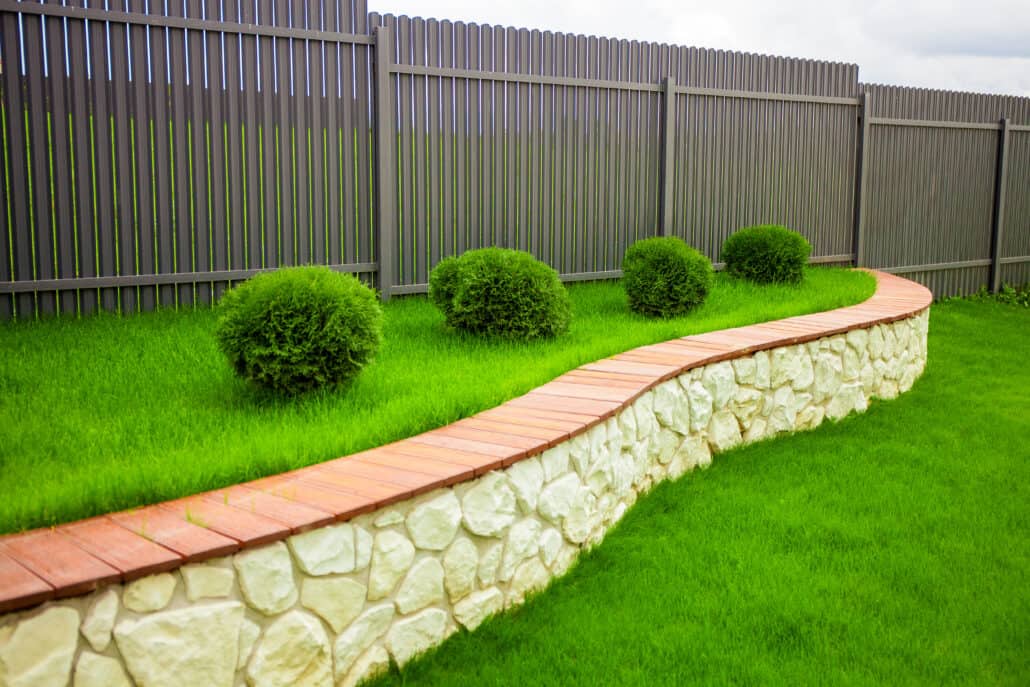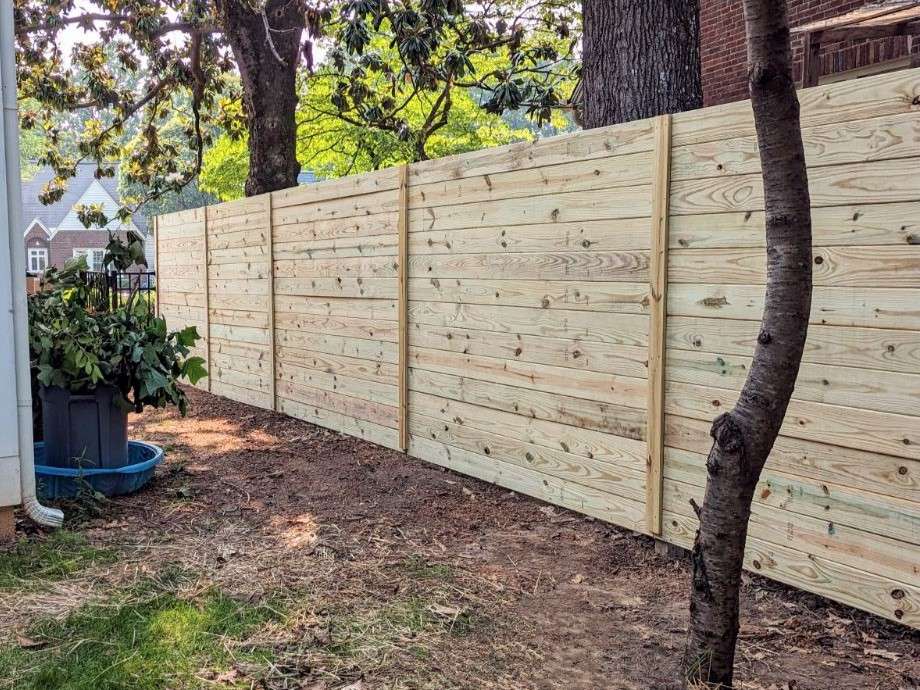All Categories
Featured
From heavy rainfall and snow to intense sunlight and wind, weather-related damage is one of the most usual causes of fence wear and tear. While you can't regulate the climate, there are several ways to safeguard your fence from the destructive impacts of weather and guarantee it lasts for years to come.
Wood Fences: While wood fencings are a timeless choice, they are highly prone to moisture and parasites. To make a timber fence a lot more resilient, choose pressure-treated lumber, cedar, or redwood. These products are more resistant to rot and pests. Nevertheless, you'll still need to secure the timber from the components with normal upkeep.
Vinyl Fences: Plastic fencings are highly long lasting and need little maintenance. They are immune to fading, splitting, and warping, making them ideal for areas that experience severe sun, rainfall, or chilly weather condition. Vinyl additionally won't rot or bring in bugs, providing long-lasting protection without the requirement for continuous maintenance.
Steel Fencings: Wrought iron and light weight aluminum fences are superb choices for their toughness and resistance to wind and moisture. They are susceptible to rusting over time, specifically if subjected to regular rains or moisture. Select galvanized or powder-coated steel fences to decrease the danger of corrosion.
![]()
Compound Fences: Integrating wood fibers and plastic, composite fences are immune to decomposing, fading, and insect damage. They supply the look of timber with much less upkeep, making them a suitable choice for locations with variable weather condition conditions.
![]()
Wood Fencings: A great quality timber sealer or stain is vital to shield your fencing from the elements. Be sure to reapply the coating every pair of years to maintain your fencing in top problem.
Plastic Fences: While plastic is low-maintenance, you can still secure it better by using a UV protectant. These finishes aid prevent staining brought on by extended sunlight direct exposure. In addition, use vinyl-specific cleansers to keep the surface complimentary of discolorations or dust build-up.
Metal Fences: To secure metal fencings from rust and rust, think about applying a rust-inhibiting primer complied with by a safety paint created for outdoor usage. Powder coating provides a resilient and lasting coating that can hold up against harsh weather. if feasible.
Wooden Fencings: Tidy your wooden fence with a pressure washing machine or a soft cloth and light detergent. Inspect the fence regularly for indications of rot, cracks, or insect problems.
Vinyl Fences: Vinyl fences are very easy to tidy with soap and water. For tougher stains, you can use a moderate bleach remedy or a vinyl cleaner to bring back the fencing's appearance. Do not fail to remember to check for any type of fractures that may let water in, leading to further damages.
Steel Fencings: Clean metal fencings with a soft fabric to get rid of dirt, dirt, and corrosion. If you see corrosion spots, remove them right away with a wire brush and treat the location with a rust-resistant guide or paint to stop it from spreading.
Wood Fences: When setting up wooden fencing messages, make sure they are set deeply into the ground, ideally below the frost line to stop shifting throughout freezing temperatures. Use concrete to protect the blog posts and stop them from leaning or being uprooted by strong winds.
Metal Fences: For metal fencings, make certain that the posts are securely anchored in concrete. This is specifically important in regions with hefty winds or constant storms. You may also wish to install extra bracing to provide additional assistance versus wind tension.
Furthermore, extreme moisture from neighboring plants can cause mold and mildew and rot in wood fences, so maintain plants at a secure range to enable for appropriate air movement and water drainage.
Metal fences must be evaluated for rust before the winter begins, and any kind of impacted areas should be treated with rust-resistant items. In addition, applying a layer of paint or protective finishing before the cool climate collections in can help protect your fencing from ice and snow damage.
![]()
Final thought. Protecting your fencing from weather-related damages calls for a combination of appropriate material selection, regular maintenance, and positive care. Whether you have a wood, plastic, metal, or composite fencing, the ideal safety measures can prolong its lifespan and keep its look. By complying with these easy yet reliable actions, you can safeguard your fencing versus the aspects and keep it looking excellent for many years ahead.
- Pick Weather-Resistant Products. Among one of the most effective methods to secure your fencing is by selecting the appropriate product for your climate. Certain products are much more sturdy and better suited to withstand specific weather.
Wood Fences: While wood fencings are a timeless choice, they are highly prone to moisture and parasites. To make a timber fence a lot more resilient, choose pressure-treated lumber, cedar, or redwood. These products are more resistant to rot and pests. Nevertheless, you'll still need to secure the timber from the components with normal upkeep.
Vinyl Fences: Plastic fencings are highly long lasting and need little maintenance. They are immune to fading, splitting, and warping, making them ideal for areas that experience severe sun, rainfall, or chilly weather condition. Vinyl additionally won't rot or bring in bugs, providing long-lasting protection without the requirement for continuous maintenance.
Steel Fencings: Wrought iron and light weight aluminum fences are superb choices for their toughness and resistance to wind and moisture. They are susceptible to rusting over time, specifically if subjected to regular rains or moisture. Select galvanized or powder-coated steel fences to decrease the danger of corrosion.

Compound Fences: Integrating wood fibers and plastic, composite fences are immune to decomposing, fading, and insect damage. They supply the look of timber with much less upkeep, making them a suitable choice for locations with variable weather condition conditions.
- Apply Protective Coatings. Despite the product, applying safety coverings is essential in extending the life of your fencing. Coatings form an obstacle that guards your fence from dampness, UV rays, and other environmental stress factors.

Wood Fencings: A great quality timber sealer or stain is vital to shield your fencing from the elements. Be sure to reapply the coating every pair of years to maintain your fencing in top problem.
Plastic Fences: While plastic is low-maintenance, you can still secure it better by using a UV protectant. These finishes aid prevent staining brought on by extended sunlight direct exposure. In addition, use vinyl-specific cleansers to keep the surface complimentary of discolorations or dust build-up.
Metal Fences: To secure metal fencings from rust and rust, think about applying a rust-inhibiting primer complied with by a safety paint created for outdoor usage. Powder coating provides a resilient and lasting coating that can hold up against harsh weather. if feasible.
- Regular Cleansing and Evaluations. Correct cleansing and normal inspections are vital to maintaining the honesty of your fencing. Accumulation of mold, dirt, and debris can trap moisture against your fence and trigger lasting damage.
Wooden Fencings: Tidy your wooden fence with a pressure washing machine or a soft cloth and light detergent. Inspect the fence regularly for indications of rot, cracks, or insect problems.
Vinyl Fences: Vinyl fences are very easy to tidy with soap and water. For tougher stains, you can use a moderate bleach remedy or a vinyl cleaner to bring back the fencing's appearance. Do not fail to remember to check for any type of fractures that may let water in, leading to further damages.
Steel Fencings: Clean metal fencings with a soft fabric to get rid of dirt, dirt, and corrosion. If you see corrosion spots, remove them right away with a wire brush and treat the location with a rust-resistant guide or paint to stop it from spreading.
- Enhance Your Fencing with Proper Setup. Proper setup is just one of one of the most reliable methods to stop weather-related damages. A fence that is improperly installed is extra most likely to collapse or experience damages throughout storms.
Wood Fences: When setting up wooden fencing messages, make sure they are set deeply into the ground, ideally below the frost line to stop shifting throughout freezing temperatures. Use concrete to protect the blog posts and stop them from leaning or being uprooted by strong winds.
Metal Fences: For metal fencings, make certain that the posts are securely anchored in concrete. This is specifically important in regions with hefty winds or constant storms. You may also wish to install extra bracing to provide additional assistance versus wind tension.
- Trim Trees and Bushes Near Your Fencing. Thick trees and hedges can cause significant damages to your fencing, especially throughout heavy tornados or high winds. Tree branches can scrape against the fencing, triggering scratches, and their roots can undercut the blog posts. Keep greenery trimmed and guarantee that tree branches are not leaning on or near the fencing.
Furthermore, extreme moisture from neighboring plants can cause mold and mildew and rot in wood fences, so maintain plants at a secure range to enable for appropriate air movement and water drainage.
- Winterize Your Fencing. Take added precautions to secure your fencing from freezing temperatures, snow, and ice if you live in an area with severe wintertimes. For wood fences, make certain the base of the articles is elevated above ground level to avoid water build-up, which can crack the wood and freeze. Consider making use of a dampness obstacle around the base of the posts to maintain them dry during the winter season.
Metal fences must be evaluated for rust before the winter begins, and any kind of impacted areas should be treated with rust-resistant items. In addition, applying a layer of paint or protective finishing before the cool climate collections in can help protect your fencing from ice and snow damage.
- Post-Storm Repair works. Tornados can cause immediate damage to your fencing, including fallen branches, damaged articles, or dislodged panels. If your fence has been significantly damaged, it's a good idea to consult an expert for repair services to guarantee it remains structurally sound.

Final thought. Protecting your fencing from weather-related damages calls for a combination of appropriate material selection, regular maintenance, and positive care. Whether you have a wood, plastic, metal, or composite fencing, the ideal safety measures can prolong its lifespan and keep its look. By complying with these easy yet reliable actions, you can safeguard your fencing versus the aspects and keep it looking excellent for many years ahead.
Latest Posts
Eco-Friendly Bathroom Remodels with Bath Fitter
Published Apr 20, 25
1 min read
Why Trust NAPA AutoCare? Montclare Auto Repair Is Your Trusted Choice
Published Apr 20, 25
2 min read
Experience the Elegance of Hardwood Floor Covering with Carpet Interiors Floor & Home
Published Apr 19, 25
1 min read
More
Latest Posts
Eco-Friendly Bathroom Remodels with Bath Fitter
Published Apr 20, 25
1 min read
Why Trust NAPA AutoCare? Montclare Auto Repair Is Your Trusted Choice
Published Apr 20, 25
2 min read
Experience the Elegance of Hardwood Floor Covering with Carpet Interiors Floor & Home
Published Apr 19, 25
1 min read